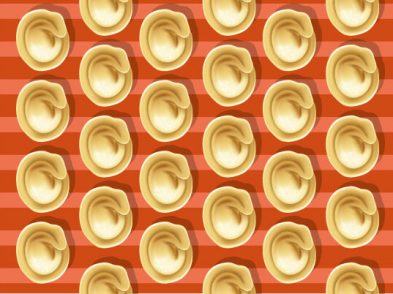Over the centuries, Florence has been the home to many wealthy and illustrious expatriates. But it has also been the home to some disputable foreign rogues and fugitives from the law. Between 1879 and 1932, one such ‘wanted’ man sought refuge there. His name was Lord Henry Somerset, a British conservative politician, songwriter and former Comptroller of Queen Victoria’s Household under Benjamin Disraeli’s government from 1874 until 1879.
Of noble lineage—he was the second son of Henry Charles FitzRoy Somerset, 8th Duke of Beaufort, and his wife, Lady Georgiana Charlotte Curzon—Henry Richard Charles Somerset was born in Kingstown County, Galway (Ireland) on December 7, 1849. Like his father, he entered politics and served as a member of parliament for Monmouthshire, in the son’s case, from 1871 to 1880. Along with being made responsible for the sovereign’s household, he also held office as deputy lieutenant of Monmouthshire and served as a privy councillor and justice of the peace for both Herefordshire and Monmouthshire.
On February 6, 1872, Somerset married a wealthy aristocrat, Lady Isabella Caroline Somers-Cocks (1851–1921) at St. George’s church in Hanover Square, London. Initially happy together, in May 1874, the couple had a son, Henry Charles Somers Augustus, but their happiness was dashed when Isabella discovered her husband in bed with Henry Smith, a 17-year-old he had known since the boy was age seven. Instead of turning a blind eye, as wives of her social standing were at that time expected to do, instigated by her overbearing mother, she caused a huge scandal by separating from her husband (as her religious beliefs did not allow her to divorce him) and by suing him for custody of their son, thus making his sexual inclinations public knowledge. Although she won the court case in 1878, by then she had been blacklisted by society. Forced to retreat to the country, she dedicated her life to charity work and went on to become an important leader of Britain’s temperance movement and a champion of women’s rights.
Somerset’s plight was far more serious. In 1533, sodomy was criminalized in England and carried the penalty of death. In 1861, the punishment was, however, reduced to life imprisonment under the Offences against the Person Act. With the probability of a long prison sentence looming, in 1879, Somerset resigned his royal appointment and fled to Florence, where he set up house in via Guido Monaco. There he began writing languid but popular songs, including Songs of Adieu (1889) and A Song of Sleep (1903). In 1889, asked to review the Songs of Adieu in the Pall Mall Gazette, Oscar Wilde quipped that the author ‘has nothing to say and says it.’ Nonetheless, Somerset impressed Wilde sufficiently that he modelled the character of Lord Henry after him in The Picture of Dorian Gray, his only novel.
In 1902, wishing to be present at the coronation of Edward VII, Somerset returned to England. This proved foolhardy for two reasons. Firstly, in 1885, Henry du Pre Labouchère, the eccentric and (surprisingly) radical parliamentarian of Huguenot origin had proposed an amendment, known as the Labouchère amendment, to a bill reforming the 1861 sexual offences law. The amendment extended punishment to any homosexual act between men (but not women), vaguely defined as ‘gross indecency,’ making prosecution easier and, therefore, much more frequent. Over the years, it would claim many illustrious victims, among them were Oscar Wilde, who in May 1895 was sentenced to two years’ hard labour under its provisions; and, nearly six decades later, mathematician and computer pioneer Alan Turing, who accepted chemical castration to avoid jail and soon thereafter committed suicide. In fact, it was only in 2003 that the new Sexual Offences Act finally repealed the law’s last, lingering vestiges.
Somerset’s second imprudence was that he failed to reckon with the extent of his mother-in-law’s rancour. As soon as he set foot on English soil, she unleashed the hounds on him (in the shape of a private detective) and pressured Scotland Yard to arrest him. Once again, he had to hotfoot it back to Florence, where he died on October 10, 1932, at the age of 82.
Fact often being stranger than fiction, in 1903, disillusioned with the progress of his own political career, Henry Labouchère retired in Florence. This leads one to speculate whether the paths of our two Henrys ever crossed there, perhaps whilst sipping tea at Doney or buying shaving soap at Henry Roberts’ pharmacy. We will never know. But what we do know is that Labouchère and his wife, actress Henrietta Hodson, lived at Villa Cristina, the home they bought near Florence. She died in 1910 and he, two years later. Both are buried at the cemetery of San Miniato al Monte. In his will, Labouchère left his considerable fortune of £522,306 (then equivalent to about 4 million US dollars) to Dora, the couple’s only daughter. Their villa is now the home to the Engineering Faculty of the University of Florence.








